History of Aviation
Throughout history, humans have wanted to fly. The mystery of how birds fly through the air has inspired people to find ways to leave the ground and control the air. Take this journey through the history of aviation, and see how inventors and engineers have developed vehicles that allow us to soar.
Before the Wright Brothers
Interest in reaching the skies existed long before the Wright Brothers made their monumental flight. For two thousand years kites have been used for various reasons including measuring distances, testing wind conditions, lifting people in the air, and even developing the first aircraft. Today, kites are still used extensively for practical and entertainment purposes. In addition to the age-old kite is the rocket which has allowed humans to study aeronautics for over a thousand years. Rockets employ very similar forces and principles to those of airplanes. These forces include lift, thrust, weight, and drag which will be explained in later units. The first form of a rocket came from the Greeks and was developed by Archytas as a steam powered wooded pigeon that would "fly". Steam escaped from within the pigeon and propelled it along a wire. Over time, different cultures integrated their knowledge into rockets and applied a variety of developments. Such developments include the use of gun powder by the Chinese in their rockets, creating a move from steam powered to solid-fuel rockets.
As time moved on, humans continued to study how things fly and by the 1700's, man had developed balloons which used hot air to rise. By 1783, a balloon was developed that could lift passengers using hot air or hydrogen. From here, developers redesigned balloons to include rudders and propulsion to construct dirigibles also known as airships. These airships use controllable flight to reach a variety of destinations, and were widely used to carry passengers. All of these major steps ultimately lead to the first human flight in an airplane.
-
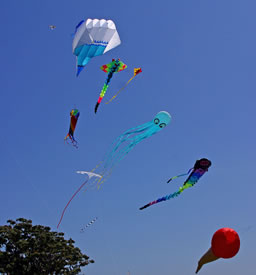
Kites
-
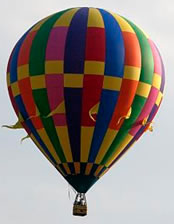
Hot Air Balloon
-
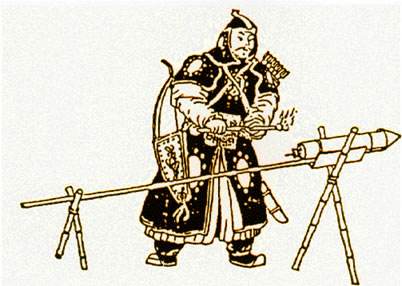
Ancient Rocket
-
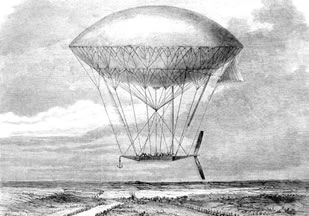
Dirigible
The Wright Brothers
On December 17, 1903, the Wright Brothers flew the first controlled, sustained, powered, heavier-than-air aircraft over a distance of 120 feet in 12 seconds on the shores of Kitty Hawk, NC. While they were the first to fly, they were not the first to try. There were numerous inventors and others who attempted to design a powered, heavier-than-air aircraft that could sustain flight. Even though the numerous attempts may have not been successful or witnessed, they still influenced the design and ideas of the Wright Brothers.
Years were spent by the brothers developing the design of the first airplane. They designed and tested the wings, frame, and motor of their aircraft at their home and work in Dayton, Ohio. Tests of the brothers' designs were conducted in Kitty Hawk, North Carolina due to the preferred winds which aided in achieving lift. These tests included using kites to test wing designs and gliders to study structural designs. Finally on that day in December, after numerous attempts and tests of varying designs, Orville Wright made the first flight. That day, the Wright Brothers were able to achieve three different flights, each averaging about 10 feet off the ground with the longest flight being 852 feet in 59 seconds.
-
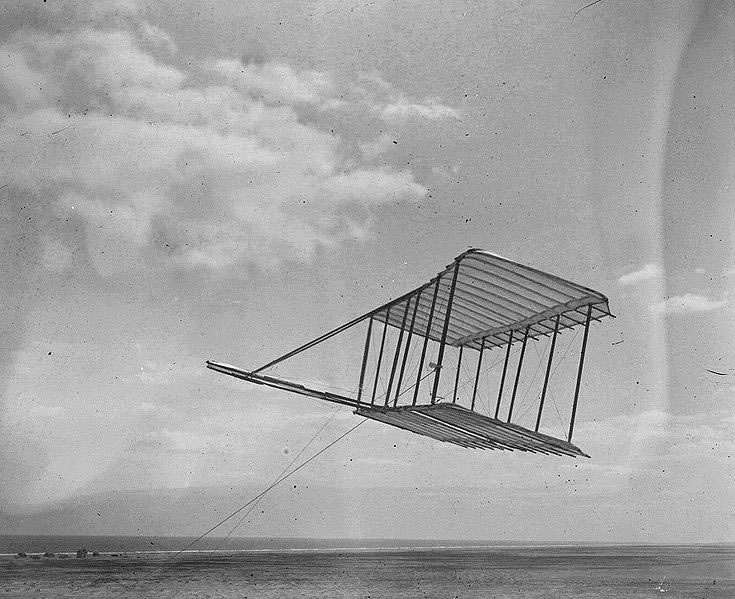
The Wright Brothers using a glider as a kite for testing
-
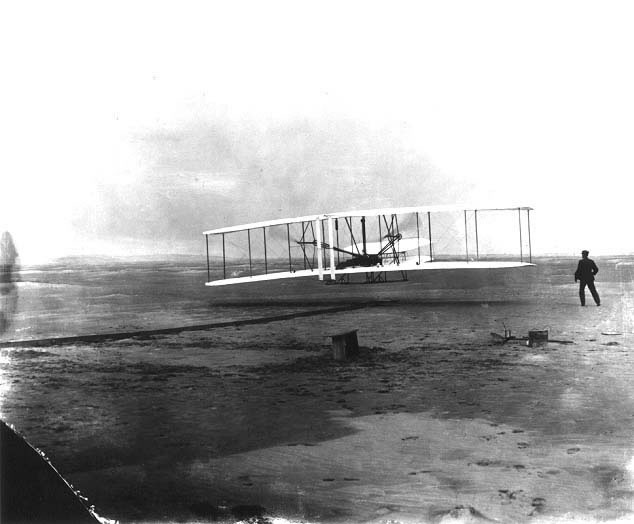
The Wright Brothers' first flight
Early Days of Aviation
When the Wright Brothers achieved flight, they opened the door for numerous discoveries to be made. Over the years, airplanes began being built for a variety of uses. Early on, many people did not see airplanes as a very useful tool. But over time, major steps were accomplished as barriers in aviation were being torn down.
The first aircraft carriers were designed and used in 1910 and 1911, opening up a door for naval use of aircraft. In 1914, the commercial airline was born when the first airline pilot, Tony Jannus, flew passengers from St. Petersburg, Florida to Tampa Bay. That same year World War I broke out and it was during this time that aviation was first seen as a tool during wartime. Bombers were designed to drop bombs and fighters were built to fight the bombers as well as other fighters. Reconnaissance aircraft were also constructed so that both sides could observe what the others were doing from greater distances.
-
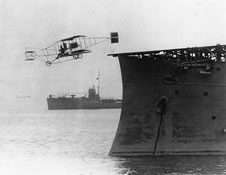
Aircraft Carrier Take Off
-
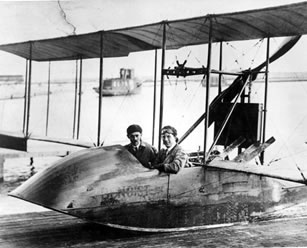
Early Commercial Flights
-
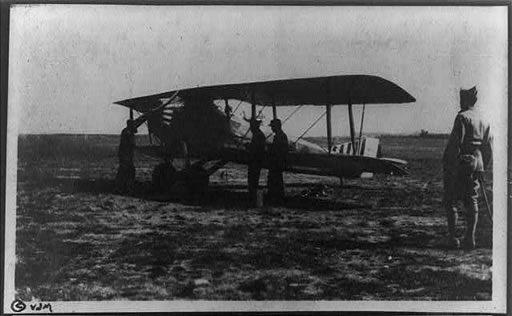
WWI Scout Plane
-
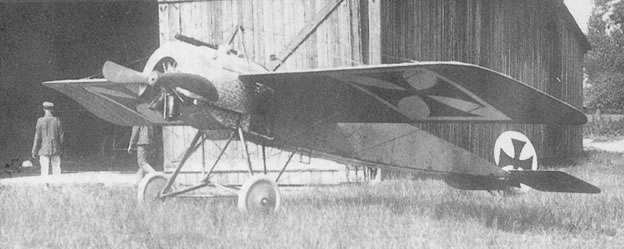
WWI Fighter Plane
Post World War I
Aviation was highly looked upon after World War I and many countries realized the importance of airplanes. Thousands of aircraft were built and hundreds of pilots were trained; however, with the end of World War I came job loss for numerous pilots. Unemployed pilots began finding ways to use their skills to find jobs and one such job was barnstorming. Pilots would do stunts to entertain spectators much like today's airshows. The reason it was called barnstorming is because pilots would typically fly into small towns, gather attention, and perform above farms.
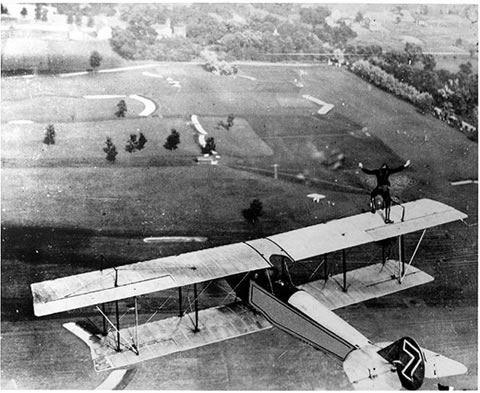
Barnstormer Wing Walking
The US Post office took notice of how helpful aviation could be in transportation and in 1918 air mail service began. Initially being offered between New York, NY and Washington DC, the service eventually branched out allowing for quicker exchange of mail over long distances.
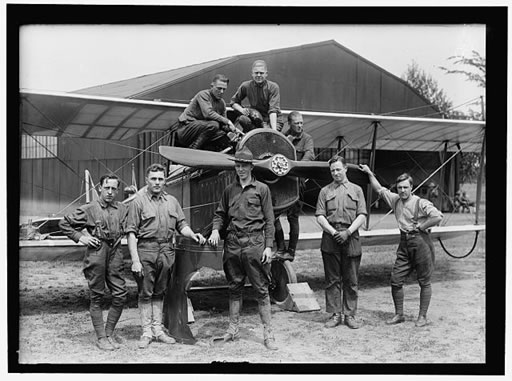
Air Mail Crew and Plane - 1918
In the early stages of aviation, airplanes had a much more limited mileage range than planes of today, which made fueling stops necessary to fly really long distances. Since there were no places to land and fuel over the oceans, most flights stayed above land. John Alcock and Arthur Brown changed this when they became the first pilots to fly an aircraft over the Atlantic Ocean in 1919. They flew over a distance of 1880 miles from Newfoundland to Ireland in 16 hours creating the first Trans-Atlantic flight. By 1927, Charles Lindbergh was the first to fly a Trans-Atlantic flight solo in his plane named the "Spirit of St. Louis".
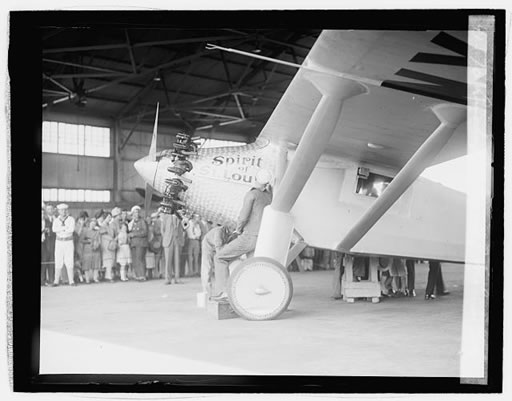
Charles Lindbergh and the "Spirit of St. Louis"
Various milestones were accomplished during these early days of aviation. Many pilots risked their lives to fly these machines which were just starting to be studied and tested. Safety regulations that exist now were not even thought of then as people were just starting to realize the impact of aviation on society.
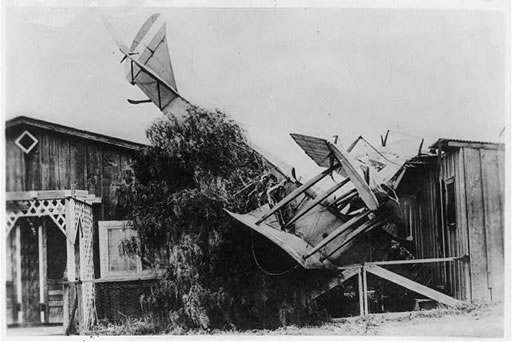
WWI Plane Crash
World War II
Aviation's importance was noticed during World War I and over time countries began building fleets of aircraft and training pilots to skillfully operate them. Numerous types of aircraft were designed during World War II and many milestones in aviation history were made during the dark time of war. Russia, for instance, began allowing women to fly reconnaissance missions. Aircraft were used for both heroic and very destructive missions. Fighters and bombers from countries all over the world fought targets in the air and on the ground. It was during this time that jet aircraft moved out of the concept phase and started making more appearances. One of the initial jet airplanes that was widely known was the Italian Caproni Campini N.1. This early form of a jet airplane could carry up to two crew members and reach a velocity of 233 mph. It was not just airplanes that were experiencing revolutionary advancements, but also rockets. Scientists around the world were working on building rockets that could lift heavier loads and fly farther distances. One very well-noted rocket was the German V-2 rocket which became the first long-range ballistic missile to see combat use. This was a step forward for scientists to complete similar designs and move the use of rockets ahead for mankind.
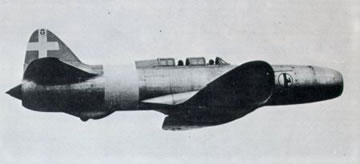
Caproni Campini N.1
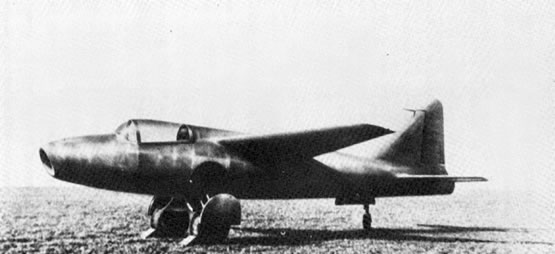
Heinkel He 178

V-2 Rocket
Post World War II
By the end of World War II, aviation had shaped itself into a very intricate and important part of human life, and was experiencing very vital developments. Jet technology was used heavily for aircraft propulsion and became more manageable. With such control and due to its efficiency, commercial aircraft began using jet propulsion in 1957 for the Boeing 707. Anybody who could afford a ticket could now travel even faster and farther than before. Similar to many of the technologies we experience every day, a high number of aviation technologies and discoveries come from the military.
In October of 1947, a skilled US Air Force pilot by the name of Chuck Yeager flew the Bell X-1 at a speed of 807.2 mph with an altitude of 45,000ft. This became the first recorded manned supersonic flight. Supersonic flight now meant humans could fly faster than the speed of sound. With such an achievement made almost 45 years after the first heavier-than-air flight, airplanes could now travel farther and faster than ever before, allowing even greater developments to be accomplished. Years after the first supersonic flight the military began developing such aircraft as the U-2, A-12, SR-71, and similar planes at a testing site named Area 51. Under very strict security, these aircraft were developed as spy planes or reconnaissance aircraft that could reach altitudes as high 70,000 to 90,000 ft.
-
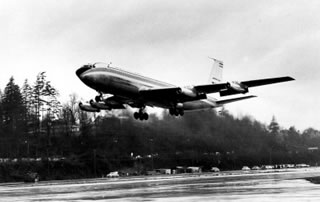
Boeing 707
-
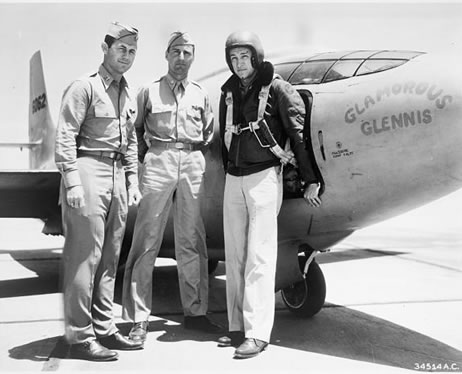
Captain Charles E. Yeager, Major Gus Lundquist and Captain James Fitzgerald with the Bell X-1
-
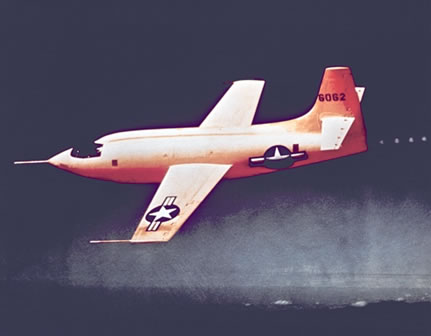
Bell X-1

U-2 Aircraft
-
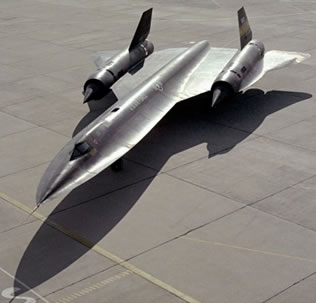
A-12 Aircraft
-
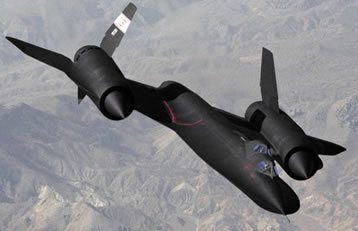
SR-71 Aircraft
Much of the technology that was used for spacecraft as well as supersonic flight has been further developed for a number of uses. One use of this technology was for stealth aircraft. Stealth technology means that an object is less likely to be detected by radar due to various design elements such as using right angles, hiding engines and exhaust, as well as using radar-absorbent material. In 1981 the first stealth aircraft, the F-117 Nighthawk, was flown. This aircraft lead the way for other stealth aircraft to be used in the military due to its success.
F-117 Nighthawk
Commercial Flight
Populations worldwide are increasing and more and more people are requiring transportation. Commercial airlines are realizing this increase and are attempting to meet the future needs and to promote flying. Just in recent years, Airbus achieved designing and building the largest passenger plane, the Airbus A380-800, capable of transporting up to 853 passengers with a typical setting for 525 passengers in 3-classes. The Airbus A380-800 is 72.72m (238 ft 7 in) in length and a wingspan of 79.75 m (261 ft 8in).
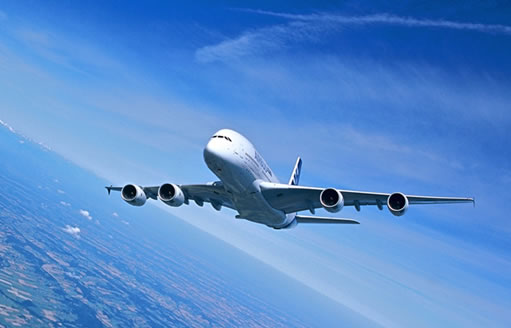
Airbus A380
The Boeing 787 Dreamliner is one of the most advanced commercial airplanes in flight today. On the surface, it looks a lot like other airplanes but under the skin it is very different. The airplane is constructed of light weight materials to increase strength while reducing weight. These materials include carbon fiber reinforced plastic, aluminum and titanium. The flight system uses electronic components that replace the hydraulic controls used in other aircraft. The electronic control system reduces the systems weight and increases reliability. With this system, pilots have state-of-the-art displays to provide flight control, guidance and avoidance. The passenger compartment is more spacious with larger windows to make the area more comfortable and inviting. With this design, Boeing has developed innovations in the flight system, structure, engine and interior setting a new standard for future aircraft.
Did you know that WhiteBox Learning engineers helped design and engineer the wing configuration on the Airbus A380-800?
Into the Future
As time has passed, humans have studied and achieved manned flight. Major developments have occurred and have moved society to a modern era of flight that was hard to imagine when aviation first began. Accomplishments are continuously being striven for and achieved. Aviation is moving forward and is reaching new milestones every day.
For example, passenger aircraft are going to experience increases in size, like with the Airbus A380-800 and the Boeing Dreamliner, and also changes in their design, as researchers incorporate innovative technologies.
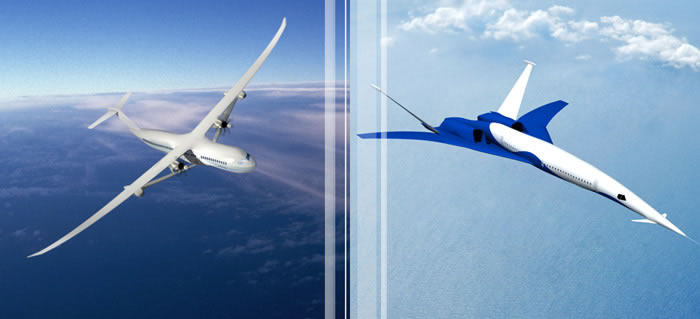
Boeing Concepts
Space Tourism
Future aircraft designs will go beyond just flying in the sky and will actually go into the upper levels of the atmosphere. Space tourism is predicted to "take off" as flight into the atmosphere becomes less expensive, due to developing and innovative technologies. Not only will less expensive space flight be available to tourists, but also to researchers and scientists. More and more discoveries will be made possible due to the rapidly developing aviation technologies.
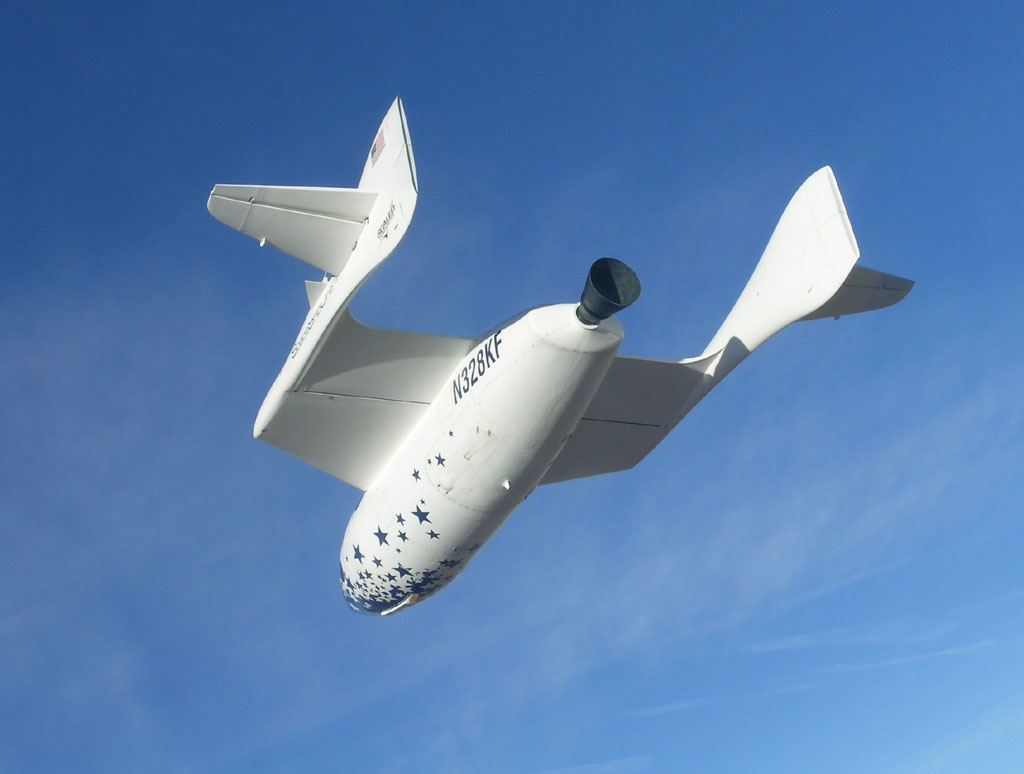
Space Ship One
Some aircraft are being designed to not have pilots in the cockpit. Such aircraft are remotely flown by people sitting behind computers in a safe and comfortable location. Some aircraft are also able to be flown by computer programs. Unmanned Aerial Vehicles (UAVs) are being utilized more in the military currently, but may soon be incorporated into other areas of aviation.
-
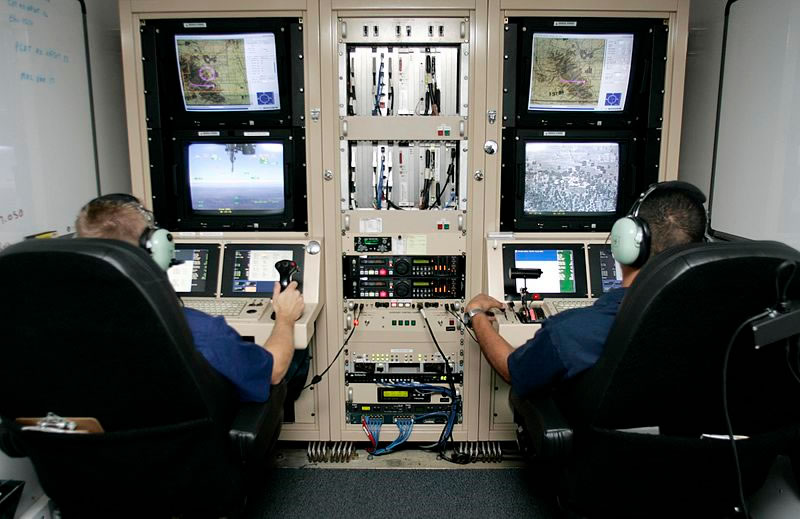
UAV Control Room
-
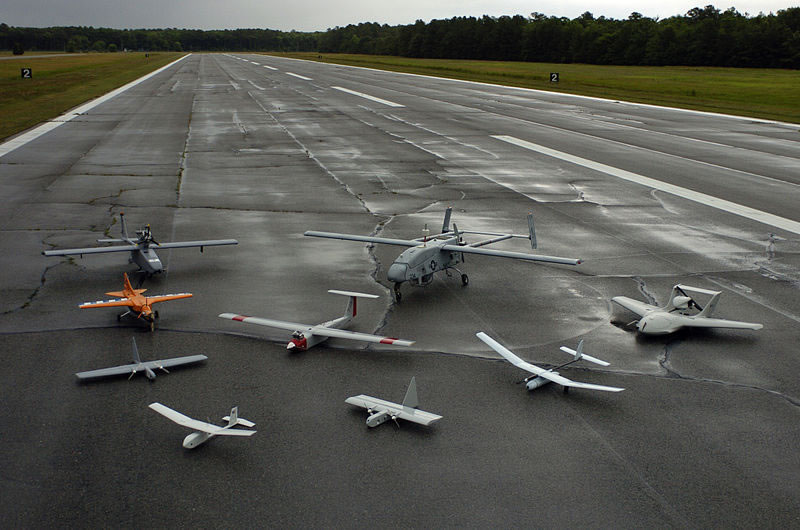
UAV Collection